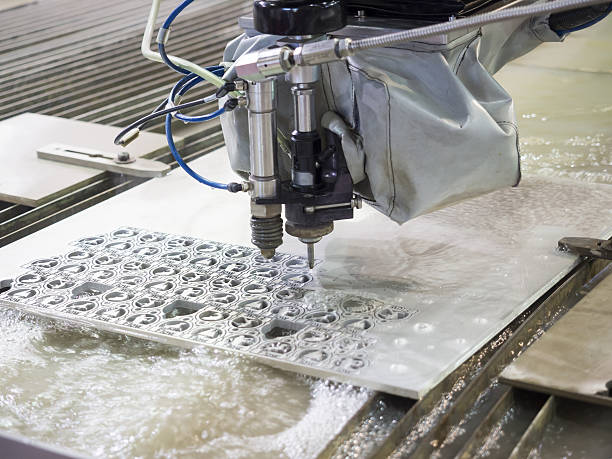Investing In Automotive Aftermarket: A Smart Move?
The automotive aftermarket industry has become lucrative for investors seeking opportunities beyond traditional automotive manufacturing. As the demand for customisation and upgrades continues to rise, investing in aftermarket products presents a compelling prospect.

The Automotive Aftermarket Defined
The automotive aftermarket broadly refers to the market for parts, accessories, or services related to vehicles after the original sale. This includes replacement parts, accessories, lubricants, appearance products, tires, collision repairs, audio systems, in-car technology, and more. The aftermarket has historically been resilient despite downturns, as vehicles require ongoing maintenance and repairs regardless of the economy.
Exploring the reasons why investing in the automotive aftermarket could be a smart move.
1. Growing Demand For Customisation
The desire for personalised vehicles has fuelled a significant uptick in the demand for aftermarket accessories. Consumers no longer view their vehicles as mere modes of transportation but as extensions of their personalities. This trend is particularly evident in the popularity of Tacoma accessories, where truck enthusiasts seek to enhance their vehicles’ aesthetics and functionality. As an investor, recognising and capitalising on this growing market can lead to substantial returns.
2. Technological Advancements
The automotive aftermarket is not just about aesthetics; technological advancements are crucial in driving its growth. From advanced GPS systems to cutting-edge entertainment options, aftermarket products offer consumers the opportunity to upgrade their vehicles with the latest technology. Investors can tap into this tech-savvy market by supporting innovative aftermarket companies that develop and produce state-of-the-art automotive accessories.
3. Shifting Consumer Behaviour
The way consumers approach vehicle ownership has evolved, and the automotive aftermarket industry has adapted accordingly. Instead of trading in vehicles for new models, many consumers opt to keep their cars longer and invest in upgrades to extend their lifespan. This shift in behaviour presents a significant opportunity for aftermarket investors as the demand for replacement parts and accessories continues to rise.
4. E-Commerce Growth
The rise of e-commerce has revolutionised the way consumers shop for aftermarket products. Online platforms provide a convenient and accessible marketplace for buyers to explore and purchase various automotive accessories. Investors looking to capitalise on this trend should consider supporting companies with a solid online presence and a seamless e-commerce strategy.

5. Environmental Considerations
The increasing focus on sustainability and environmental responsibility has increased demand for eco-friendly aftermarket products. From energy-efficient lighting solutions to environmentally conscious interior upgrades, consumers seek ways to minimise their environmental impact while enjoying customised driving experiences. Investing in companies prioritising eco-friendly practices and offering sustainable automotive aftermarket solutions aligns with evolving consumer values.
6. Diversification In Product Offerings
The automotive aftermarket is not limited to a specific category of products. It encompasses a wide range, including performance parts, exterior accessories, and interior enhancements. Investors can diversify their portfolios by supporting companies that offer a comprehensive suite of aftermarket products catering to various customer needs and preferences.
7. Global Market Expansion
The automotive aftermarket is not confined to a single geographical location. With the global expansion of the automotive industry, investing in the aftermarket provides access to diverse markets. As emerging economies witness a surge in vehicle ownership, the demand for aftermarket products will likely follow suit, offering investors the potential for substantial returns.
Thus, the expansion and versatility of the automotive aftermarket, marked by consumer demand and global reach, underscore its potential as a lucrative investment field. Next, the discussion turns to the challenges and considerations important in navigating this rapidly evolving market.
Challenges And Considerations
While the automotive aftermarket presents attractive opportunities, challenges and risks must be considered.
One is that the industry is highly competitive, with players ranging from large national chains to small local repair shops all vying for business. It can be difficult for investors to identify and invest in the most promising companies that will gain market share over time.
Additionally, consumer preferences and trends can shift, potentially lessening demand for certain accessories or parts. Investors must stay on top of emerging technologies and developments in vehicle designs that could disrupt established products.
Rapid advancements in electric vehicles and autonomous driving technologies could also disrupt traditional aftermarket businesses. However, this also opens new avenues for investment in developing aftermarket solutions tailored to these emerging technologies.
There is also some exposure to economic cycles, as large-ticket aftermarket purchases may decline more than routine maintenance during downturns. And OEMs (original equipment manufacturers) are trying to capture more aftermarket business themselves. While the independent aftermarket has advantages, OEM competition is a factor to monitor.
In Conclusion
Investing in the automotive aftermarket holds significant promise. The industry’s growth is fuelled by the increasing demand for customisation, technological advancements, shifting consumer behaviour, environmental considerations, and diverse product offerings.
As the automotive landscape continues to evolve, savvy investors may find the aftermarket sector an innovative and strategic avenue for investment. This sector offers the potential for substantial returns in the long run.















